In today’s global world, effective communication across cultures is essential. The guide ‘115+ Spanish Food Vocabulary You Must Know About: An Essential Guide’ is a valuable tool for anyone looking to understand Spanish food terms. Whether you’re traveling, passionate about cooking, or learning the language, knowing these words helps you engage better and appreciate Hispanic cultures more. This guide not only lists essential terms but also shares the cultural significance behind each one, enriching your language skills and culinary knowledge. Let’s dive in and explore the delicious world of Spanish food vocabulary.
Mealtimes – horarios de comida
Mealtimes in Spanish-speaking cultures have specific names. Desayuno (breakfast) is a light meal, usually eaten in the morning. Almuerzo (lunch) is the main meal, typically enjoyed in the early afternoon. Cena (dinner) is eaten later, often after 8 PM. Merienda is a small snack, eaten between meals, usually in the afternoon.
| Spanish | English Translation |
|---|---|
| Desayuno | Breakfast |
| Almuerzo | Lunch |
| Cena | Dinner |
| Merienda | Snack |
| Aperitivo | Appetizer |
Essential Food Groups in Spanish
Fruits – La Fruta
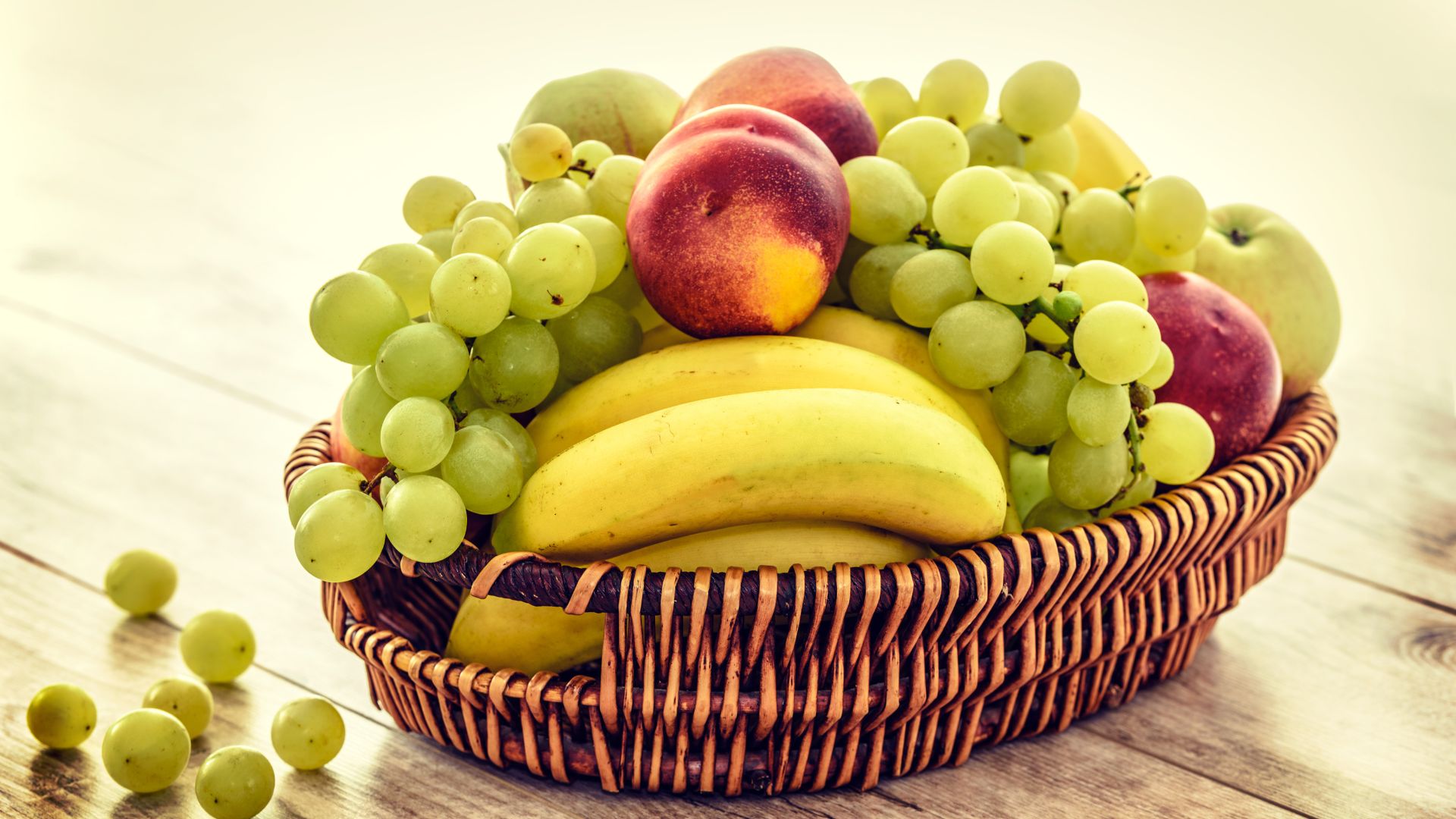
Exploring Spanish fruits, or ‘la fruta’, is a must for anyone interested in the diverse food traditions of Spanish-speaking regions. From the sweet to the exotic, each fruit carries its own unique taste and texture, reflecting the vibrancy of these cultures. Beyond being delicious, these fruits offer numerous health benefits and are an integral part of Spanish and Latin American cuisine.
| Spanish Fruit | English Translation |
| Chirimoya | Custard Apple |
| Guayaba | Guava |
| Lúcuma | Lucuma |
| Níspero | Loquat |
| Maracuyá | Passion Fruit |
| Granadilla | Sweet Granadilla |
| Pitaya | Dragon Fruit |
| Zapote | Sapodilla |
| Caimito | Star Apple |
| Higo | Fig |
| Mamey | Mamey Sapote |
| Acerola | Barbados Cherry |
| Pepino Dulce | Sweet Cucumber |
| Mora | Mulberry |
| Lulo | Naranjilla |
| Cereza | Cherry |
| Melocotón | Peach |
| Papaya | Papaya |
| Sandía | Watermelon |
| Plátano | Banana |
| Kiwi | Kiwi |
Vegetables – Las Verduras
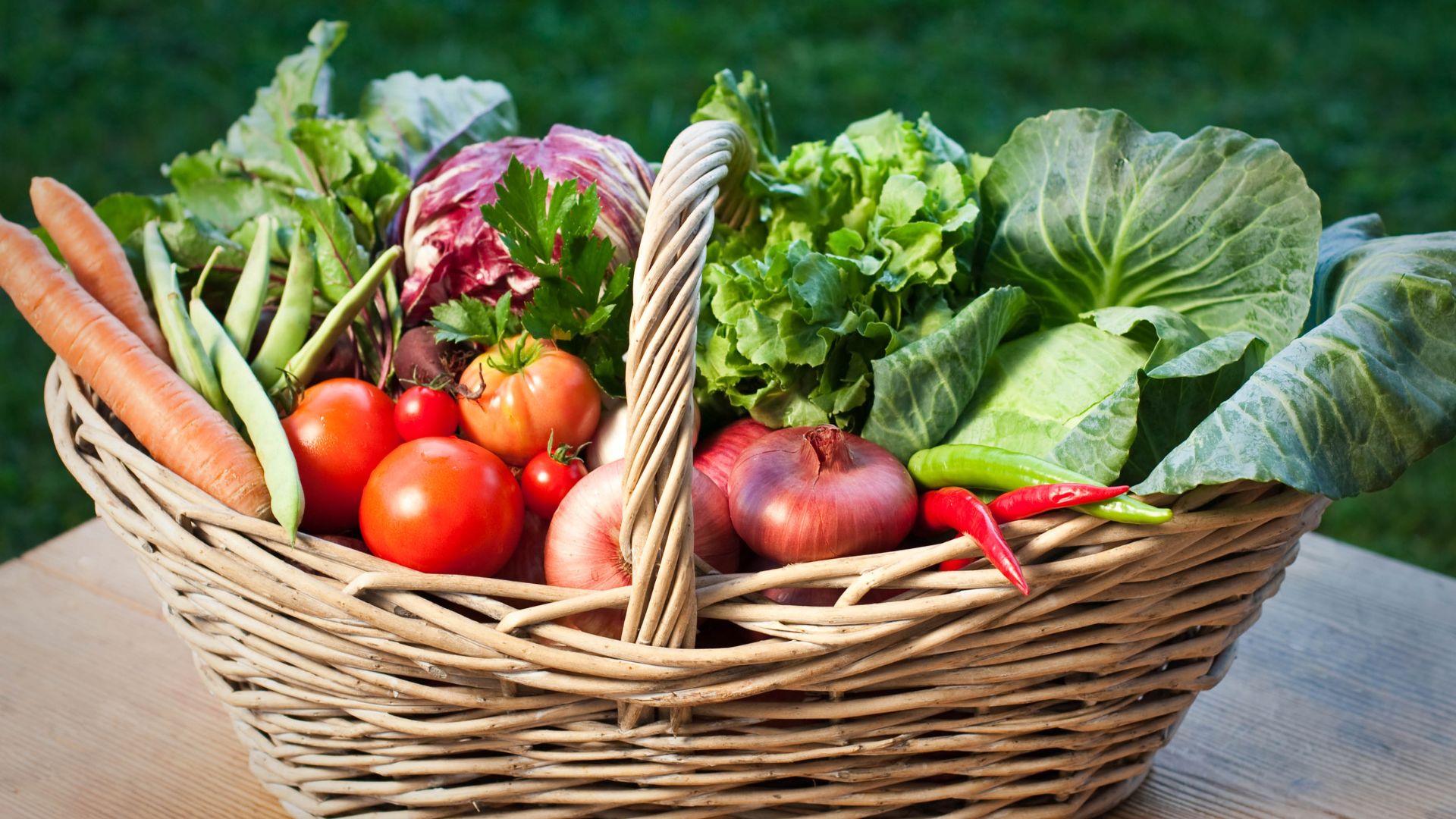
Spanish vegetables—or ‘las verduras’—are rich in flavor and essential to the diets of Spanish-speaking cultures. Vegetables such as tomates (tomatoes), pimientos (peppers), and cebollas (onions) form the foundation of many traditional dishes. These vegetables are not just flavorful but also packed with essential nutrients that make meals wholesome.
| Spanish Vegetable | English Translation |
| Aguaymanto | Goldenberry |
| Zapote | Sapodilla |
| Tamarindo | Tamarind |
| Mangostán | Mangosteen |
| Uva | Grape |
| Carambola | Starfruit |
| Membrillo | Quince |
| Jaca | Jackfruit |
| Espinaca | Spinach |
| Pimiento | Bell Pepper |
| Brócoli | Broccoli |
| Cebolla | Onion |
| Zanahoria | Carrot |
| Ajo | Garlic |
| Calabacín | Zucchini |
| Pepino | Cucumber |
| Alcachofa | Artichoke |
| Coliflor | Cauliflower |
| Apio | Celery |
| Berenjena | Eggplant |
| Lechuga | Lettuce |
| Judía Verde | Green Bean |
Dairy Products – Productos Lácteos

Dairy products, or ‘productos lácteos’, play a significant role in Spanish cuisine. Items like queso (cheese), leche (milk), and yogur (yogurt) are common in everyday meals. These dairy products are rich in nutrients like calcium and protein and are essential in both traditional and modern cooking.
| Spanish Dairy Product | English Translation |
| Queso Manchego | Manchego Cheese |
| Leche de Cabra | Goat Milk |
| Requesón | Ricotta |
| Cuajada | Curd |
| Yogur Griego | Greek Yogurt |
| Mantequilla | Butter |
| Crema Fresca | Sour Cream |
| Queso Fresco | Fresh Cheese |
| Leche Condensada | Condensed Milk |
| Queso Azul | Blue Cheese |
| Nata | Cream |
| Queso Brie | Brie Cheese |
| Queso Parmesano | Parmesan Cheese |
| Queso de Cabra | Goat Cheese |
| Leche Evaporada | Evaporated Milk |
| Leche Entera | Whole Milk |
| Leche Descremada | Skimmed Milk |
| Kéfir | Kefir |
| Manteca | Lard |
| Leche de Búfala | Buffalo Milk |
| Queso Provolone | Provolone Cheese |
| Queso Gruyère | Gruyère Cheese |
| Leche A2 | A2 Milk |
| Queso Ricotta | Ricotta Cheese |
| Queso Feta | Feta Cheese |
Meat – La Carne
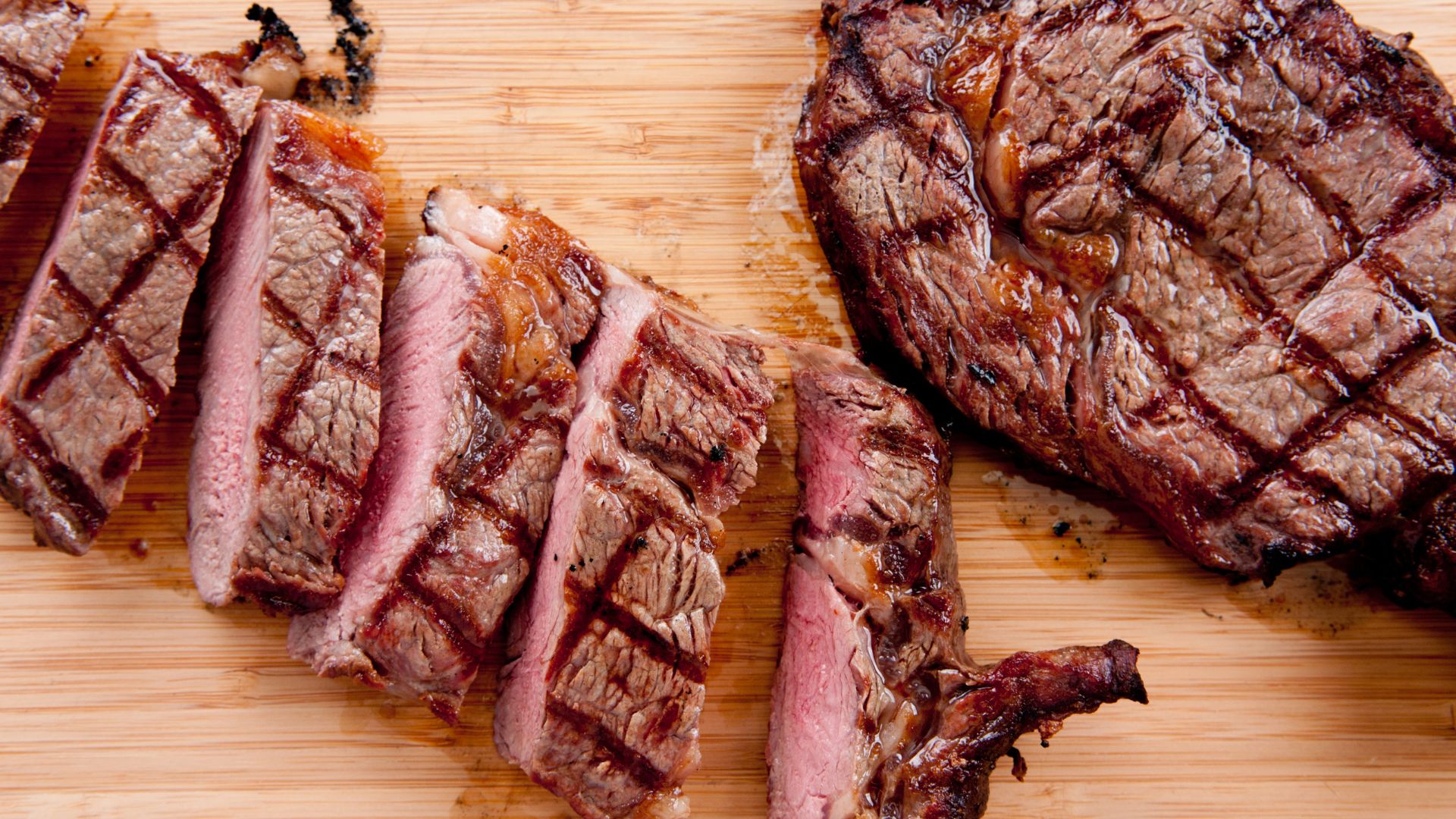
In Spanish cuisine, ‘la carne’ (meat) is featured prominently, offering a variety of flavors and textures. Whether it’s carne de res (beef) or cordero (lamb), each type of meat is prepared with distinct regional touches, showcasing the richness of local traditions.
| Spanish Meat | English Translation |
| Carne de Res | Beef |
| Jamón Serrano | Serrano Ham |
| Chorizo | Spanish Sausage |
| Cordero Asado | Roasted Lamb |
| Jamón Ibérico | Iberian Ham |
| Morcilla | Blood Sausage |
| Chuleta de Cerdo | Pork Chop |
| Pechuga de Pollo | Chicken Breast |
| Filete de Ternera | Veal Fillet |
| Panceta | Bacon |
| Salchichón | Cured Sausage |
| Lomo de Cerdo | Pork Loin |
| Carne de Cordero | Lamb Meat |
| Costilla de Res | Beef Ribs |
| Albóndigas | Meatballs |
| Carne de Cabra | Goat Meat |
| Carne de Pato | Duck Meat |
| Chuleta de Cordero | Lamb Chop |
| Carne de Faisán | Pheasant Meat |
| Carne de Conejo | Rabbit Meat |
| Carne de Venado | Venison |
| Carne de Bisonte | Bison Meat |
| Carne de Jabalí | Wild Boar Meat |
| Paletilla de Cordero | Lamb Shoulder |
| Carne de Codorniz | Quail Meat |
Desserts – El Postre

Spanish desserts (‘el postre’) are an indulgent way to end a meal. From flan (creamy caramel custard) to churros (crispy dough sticks served with chocolate), these sweets reflect the rich culinary heritage of Spain and Latin America. Each dessert carries a story and regional twist, making it a delightful experience.
| Spanish Dessert | English Translation |
| Flan de Caramelo | Caramel Flan |
| Tarta de Santiago | Almond Cake |
| Churros con Chocolate | Churros with Chocolate |
| Tarta de Tres Leches | Tres Leches Cake |
| Arroz con Leche | Rice Pudding |
| Natillas | Custard |
| Bizcocho Borracho | Soaked Sponge Cake |
| Tarta de Queso | Cheesecake |
| Polvorones | Spanish Shortbread |
| Crema Catalana | Catalan Cream |
| Hojaldre de Manzana | Apple Puff Pastry |
| Buñuelos | Fritters |
| Mazapán | Marzipan |
| Turrón de Jijona | Soft Almond Nougat |
| Rosquillas | Spanish Doughnuts |
| Leche Frita | Fried Milk Dessert |
| Pestiños | Honey Fritters |
| Alfajores | Dulce de Leche Cookies |
| Tocinillo de Cielo | Egg Yolk Flan |
| Yemas de Santa Teresa | Sweet Egg Yolk Treat |
| Pionono | Cream-filled Sponge Roll |
| Ensaïmada | Mallorcan Sweet Pastry |
| Quesada Pasiega | Spanish Cheesecake |
| Galletas de Almendra | Almond Cookies |
| Sobao Pasiego | Butter Sponge Cake |
Staple Foods – Alimentos básicos
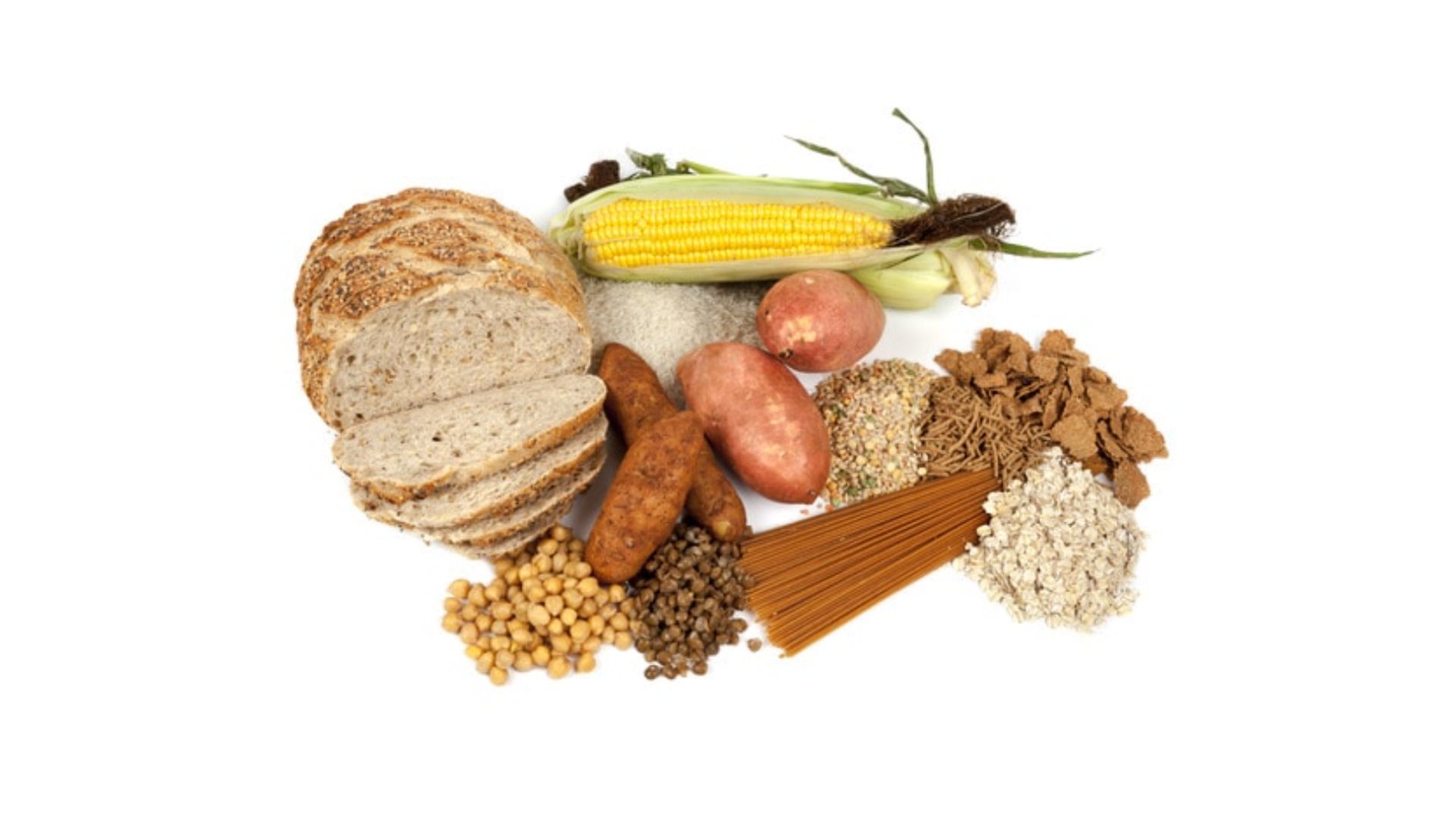
Staple foods are essential in Spanish and Latin American diets. Common staples include pan (bread), arroz (rice), frijoles (beans), maíz (corn), and papas (potatoes). These foods are used in everyday dishes like tortillas, paella, and bean stews. They provide the base for many meals across different regions. You’ll find these ingredients in most local cuisines.
| Spanish | English Translation |
|---|---|
| Pan | Bread |
| Arroz | Rice |
| Frijoles | Beans |
| Maíz | Corn |
| Papas | Potatoes |
| Harina | Flour |
| Lentejas | Lentils |
| Plátano | Plantain |
| Yucca | Cassava root |
Herbs and Spices – Hierbas y especias
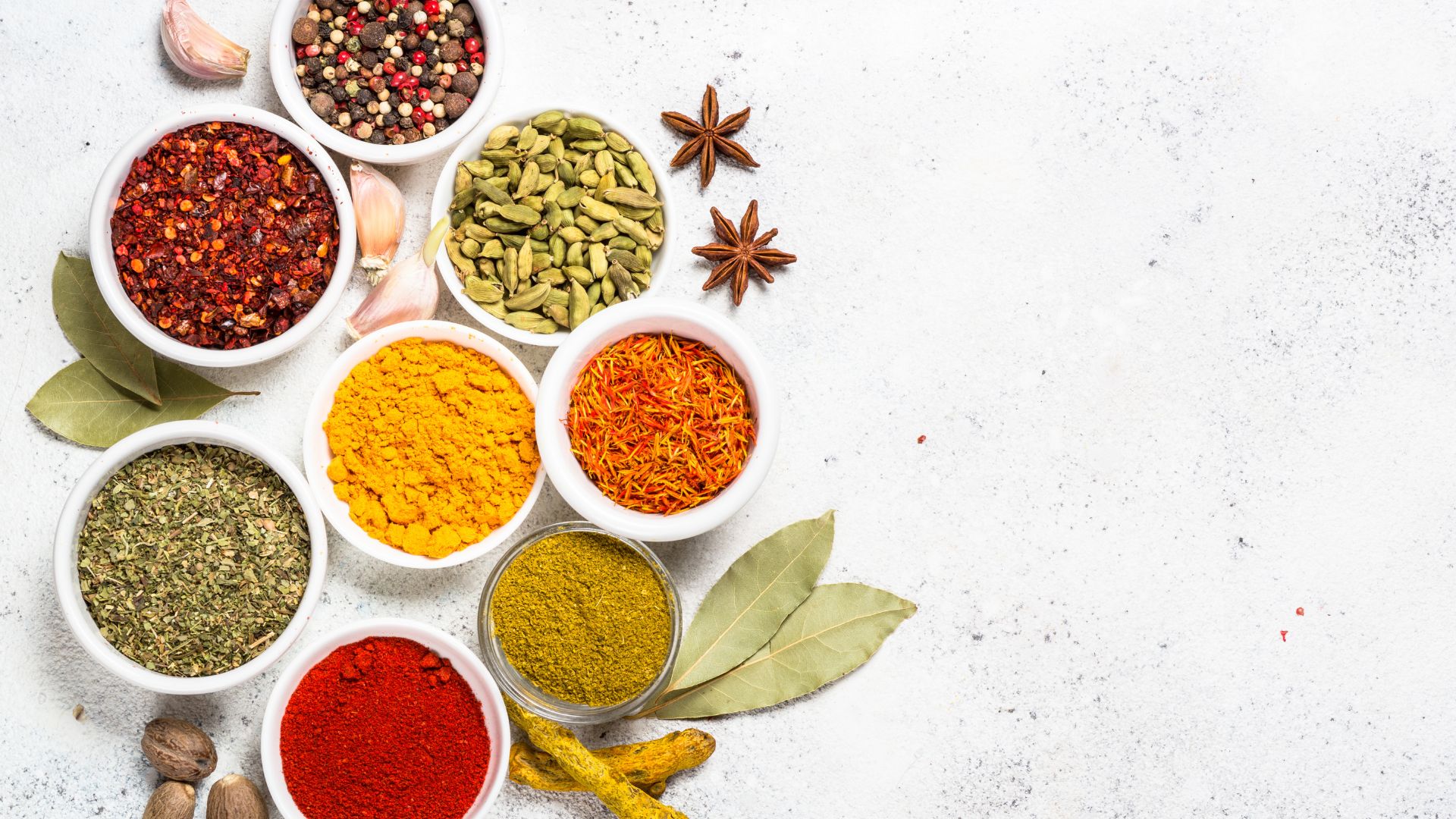
Herbs and spices add flavor to many Spanish dishes. Some popular herbs are albahaca (basil), orégano (oregano), and romero (rosemary). Common spices include comino (cumin) and pimentón (paprika). These ingredients are used to enhance meats, stews, and vegetables. Learning them helps you cook authentic Spanish food.
| Spanish | English Translation |
|---|---|
| Albahaca | Basil |
| Orégano | Oregano |
| Romero | Rosemary |
| Tomillo | Thyme |
| Cilantro | Cilantro |
| Comino | Cumin |
| Pimentón | Paprika |
| Canela | Cinnamon |
| Clavo | Clove |
| Nuez Moscada | Nutmeg |
Flavours – Sabores
Flavors describe the taste of foods in simple terms. Common flavors are dulce (sweet), salado (salty), picante (spicy), ácido (sour), and amargo (bitter). Spanish and Latin American cuisines often blend these flavors in creative ways. For example, a dish may combine sweet and spicy. This balance makes meals exciting and full of variety.
| Spanish | English Translation |
|---|---|
| Dulce | Sweet |
| Salado | Salty |
| Picante | Spicy |
| Ácido | Sour |
| Amargo | Bitter |
Also Read: How To Say “I Miss You” In Spanish: 35 Unique Ways To Express Missing Someone
Key Verbs Related to Food
Mastering food-related verbs in Spanish can greatly enhance your ability to communicate in culinary contexts, whether you’re cooking, ordering food, or discussing recipes.
| Verb (Spanish) | English Translation | Example Sentence (Spanish) | Example Sentence (English) |
| Comer | To eat | Me gusta comer frutas frescas. | I like to eat fresh fruits. |
| Cocinar | To cook | A mi mamá le encanta cocinar platos. | My mom loves to cook dishes. |
| Hornear | To bake | Vamos a hornear un pastel. | We are going to bake a cake. |
| Freír | To fry | Vamos a freír papas. | We are going to fry potatoes. |
| Sazonar | To season | Es importante sazonar la carne. | It’s important to season the meat. |
Using Food Vocabulary in Context
Ordering at a Restaurant

Knowing some basic food vocabulary can make all the difference when ordering at a restaurant in a Spanish-speaking country. Being able to clearly express dietary preferences and desires can elevate your dining experience and help you enjoy local dishes.
| Spanish | English Translation |
| Me gustaría pedir el pescado. | I would like to order the fish, please. |
| Quisiera la ensalada de pollo. | I would like the chicken salad. |
| Para mí, la sopa de verduras. | I’ll have the vegetable soup, please. |
Also Read: 44 Ways To Say Thank You & You’re Welcome In Spanish: Master The Art Of Expressing Gratitude
Shopping at the Market

Knowing basic phrases like “¿Cuánto cuesta esto?” (How much does this cost?) or “Quisiera comprar…” (I’d like to buy…) can make shopping at local markets smoother and more enjoyable. It helps you connect with vendors and ensures you get exactly what you want.
| English | Spanish Translation |
| How much does this cost? | ¿Cuánto cuesta esto? |
| Can you give me half a kilo? | ¿Me puede dar medio kilo? |
| I would like to buy some tomatoes. | Quisiera comprar unos tomates. |
Conclusion
In conclusion, learning Spanish food vocabulary enriches your travel, dining, and cultural experiences in Spanish-speaking countries. Whether ordering at a restaurant, shopping at a market, or cooking at home, these essential terms allow you to connect with the local culture and enjoy its flavors to the fullest. Keep visiting the Translation Blog for more translation articles.

